calsfoundation@cals.org
Aquaculture
Aquaculture—the farming of aquatic plants and animals—includes private sector, commercial fish farms, state and federal hatcheries that produce fish to stock public waters, and farm pond owners who stock ponds for recreational fishing. Overall sales place aquaculture in the top ten agricultural industries in the state.
Arkansas is the birthplace of warmwater aquaculture in the United States. The first commercial fish farms were built in Arkansas in the 1940s to raise goldfish. The industry in Arkansas has diversified into production of more than twenty species of fish and crustaceans. These species supply food-fish markets, recreational fishing markets and waters, retail pet markets, gardening supply markets, and markets for aquatic weed and snail control.
Arkansas ranks second in aquaculture-producing states. It leads in production of baitfish (live fish bought by anglers as bait for recreational and sport fishing), largemouth bass for stocker fish, hybrid striped bass fry, and Chinese carp. It is third nationally in catfish production. The world’s largest baitfish farm (Lonoke County), largemouth bass farm (Monroe County), goldfish farm (Lonoke County), and hybrid striped bass hatchery (Lonoke County) are all in Arkansas. Arkansas fish farmers serve in a variety of leadership capacities in national aquaculture associations.
Catfish (Ictalurus punctatus) farming in the United States began in Arkansas in the late 1950s when several farmers caught catfish from rivers, stocked ponds with them, fed them, and sold them through local fish markets. The economic impact of the catfish industry in Chicot County alone was $384 million in 2001.
The Arkansas baitfish industry includes production of golden shiners (Notemigonus crysoleucas), fathead minnows (Pimephales promelas), and goldfish (Carassius auratus). By 2005, more than six billion baitfish were sold annually from Arkansas. Sales of live baitfish are a major air freight commodity from the state, and the baitfish industry is the leading industry in Lonoke County.
A growing number of Arkansas fish farmers have begun to raise ornamental fish species, including koi carp and fancy goldfish. Ornamental fish are sold in the aquarium trade for homes and offices and for stocking in water gardens, which has become increasingly popular.
Arkansas is also home to several commercial and public-sector hatcheries. The Arkansas Game and Fish Commission and the U.S. Fish and Wildlife Service manage the public hatcheries.
Largemouth bass are raised in Arkansas for sale as food. The primary markets are ethnic markets in cities on the East and West coasts.
Commercial hatcheries in Arkansas raise hybrid striped bass, catfish, sport fish, and Chinese carp. Arkansas ships live hybrid striped bass fry (newly hatched baby fish) and fingerlings (4–6″ fish) to hybrid striped bass food-fish grow-out farms coast to coast. In the United States, most fry and fingerlings are transported by eighteen-wheeled trucks with insulated tanks equipped with liquid oxygen. Hybrid striped bass fry are exported to fish farms in Taiwan, Israel, and Europe in insulated boxes air-freighted from Little Rock (Pulaski County).
Sport-fish hatcheries in Arkansas raise catfish, largemouth bass, several varieties of bluegill, redear sunfish, hybrid bream, crappie, and yellow perch to sell for recreational fishing. Most of the sales are to wholesalers and distributors, but the hatcheries also sell to individual farm pond owners.
Arkansas farms sell three species of Chinese carp: grass carp (Ctenopharyngodon idellus), bighead carp (Hypophthalmichthys molitrix), and black carp (Mylopharyngodon piceus). Hatcheries in Arkansas spawn and raise fingerlings to sell to a variety of markets. Grass carp are sold for aquatic weed control. They have unique teeth (pharyngeal teeth) that allow them to consume and digest rooted aquatic plants. Many states buy grass carp to stock in public waters to control aquatic weeds in shipping channels and public fishing areas, and farm pond owners and reservoir managers buy them for the same reason. Bighead carp fingerlings are sold to fish farmers who raise them for sale as live food fish in ethnic markets in the Northeast. Farmers of catfish, baitfish, largemouth bass, and hybrid striped bass buy black carp fingerlings to stock in production ponds to control snails that spread fish parasites. Black carp have a unique tooth structure that allows them to crush snails and use them as food. The primary parasite controlled by black carp in catfish ponds is a trematode (Bolbophorus damnificus); in baitfish, largemouth bass, and hybrid striped bass ponds, it is the yellow grub (Clinostomum complanatum).
The use of Chinese carp, a non-native species, on fish farms has become controversial. Many fish (such as rainbow trout, largemouth bass, lake trout, tilapia, and walleye) that have been stocked in public waters around the world are not native to those areas. Similarly, Chinese carp are not native to Arkansas. The U.S. Fish and Wildlife Service introduced the first Chinese carp to the United States to develop an environmentally friendly alternative to chemical pesticides for aquatic vegetation control. Grass carp have been stocked directly into public waters for vegetation control since the late 1960s and continue to be an economic means of controlling vegetation. Bighead carp were stocked in sewage lagoons and public waters in the 1970s in several states to improve water quality by filtering out plankton (microscopic algae).
Technologies to produce functionally sterile fish (triploids: fish with an extra chromosome that renders them incapable of reproducing) were developed in the late 1960s. Sterile fish will not reproduce in the wild and thus pose little risk of causing harm to the environment; this allows fisheries to realize the benefit of some species without the attendant risks. Hatcheries test each individual fish by taking a blood sample and checking it under a Coulter counter to confirm its triploidy. The Fish and Wildlife Service’s Triploid Grass Carp Certification Program sends an inspector to the hatchery to sample fish from each vat and repeats the blood sample and Coulter counter process to verify that fish are triploid. Arkansas hatcheries produce only triploid black carp and do not sell fertile black carp.
Arkansas farmers also raise crawfish (Procambarus clarkii). Crawfish are raised in ponds in which a forage crop such as rice or milo has been planted. When ponds are flooded, crawfish emerge from burrows in the mud and feed on the forage crop. Crawfish are harvested in conical traps baited with “trash fish” such as shad or with crawfish bait pellets. Crawfish are marketed as a live product, often after a purging process. In Arkansas, crawfish are a seasonal product, sold primarily in the spring. Crawfish boils are popular with consumers, and some restaurants serve boiled crawfish.
Freshwater prawn (Macrobrachium rosenbergii) and marine shrimp (Litopenaeus vannamei) are also raised and sold in Arkansas. Both can adapt to freshwater environments, but marine shrimp require the addition of potassium and other ions to the water to survive. Post-larvae (baby shrimp and prawns) are bought from hatcheries in other states or countries for stocking in the spring. Post-larvae marine shrimp must be certified free of pathogens and acclimated carefully to fresh water. Feed must be distributed over the entire pond because they cannot swim to the other end. Prawns, especially, are territorial and will kill others that enter their territory. Substrate added to prawn ponds, in the form of horizontal or vertical webbing, allows for higher yields. Prawns and shrimp must be harvested by the end of September, before the weather turns cold. As tropical species, prawns and shrimp will not survive the winter outdoors in Arkansas.
Arkansas has hundreds of thousands of farm ponds, used for a variety of purposes, such as watering livestock, fire control, attracting wildlife, and recreational fishing. The most common management system is to stock a combination of catfish, bass, and bluegill. Bass and bluegill will spawn in the pond and, if managed properly, can develop self-sustaining populations. Channel catfish will spawn if spawning receptacles are provided. Fish populations need to be monitored and managed to produce the kind of fishing desired.
Aquaculture has had a major impact in Arkansas, especially in the Delta, where the majority of aquaculture production in Arkansas occurs. This region is characterized by high rates of poverty and unemployment. Fish farms frequently are some of the largest businesses in an area and provide employment and demand for other services from electricians, plumbers, equipment and truck dealerships, supply companies, and other service providers.
For additional information:
Arkansas Aquafarming. Pine Bluff: Cooperative Extension Program, University of Arkansas at Pine Bluff (1984–).
Kaliba, A. R., and C. R. Engle. “Economic Impact of the Catfish Industry on Chicot County.” Pine Bluff: Cooperative Extension Program, University of Arkansas at Pine Bluff, 2003.
Stone, N., and G. Selden. Aquaculture Alternatives in Arkansas. Pine Bluff: Cooperative Extension Program, University of Arkansas at Pine Bluff, 2006.
Stone, N., E. Park, L. Dorman, and H. Thomforde. “Baitfish Culture in Arkansas: Golden Shiners, Goldfish and Fathead Minnows.” Pine Bluff: Cooperative Extension Program, University of Arkansas at Pine Bluff, 1997.
University of Arkansas at Pine Bluff Aquaculture/Fisheries Center. http://www.uapb.edu/academics/school_of_agriculture_fisheries_and_human_sciences/aquaculture_fisheries/aquaculture_fisheries.aspx (accessed June 29, 2023).
Carole R. Engle
University of Arkansas at Pine Bluff
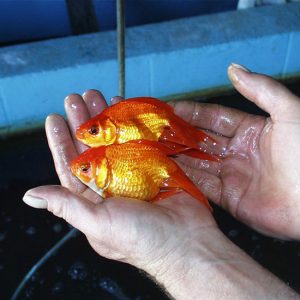 Fan-tailed Goldfish
Fan-tailed Goldfish  HKDSNARC Fish Feeding
HKDSNARC Fish Feeding 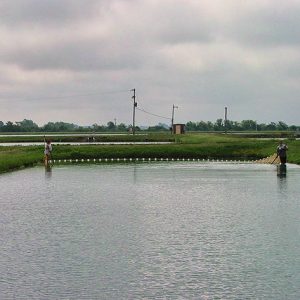 HKDSNARC Seine Fishing
HKDSNARC Seine Fishing 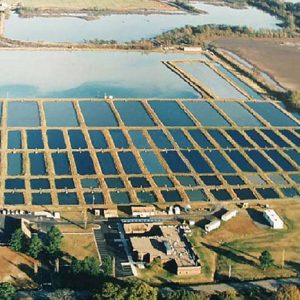 HKDSNARC Aerial View
HKDSNARC Aerial View  Joe Hogan Fish Hatchery
Joe Hogan Fish Hatchery 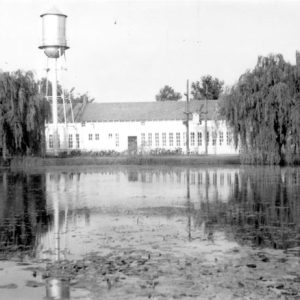 Joe Hogan Fish Hatchery
Joe Hogan Fish Hatchery  Joe Hogan Fish Hatchery Truck
Joe Hogan Fish Hatchery Truck 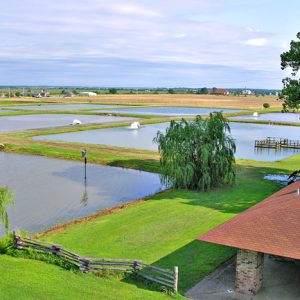 Joe Hogan Fish Hatchery
Joe Hogan Fish Hatchery 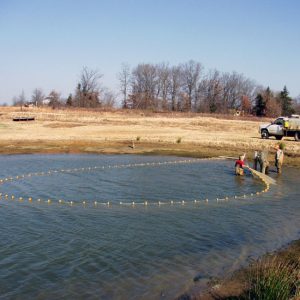 Minnow Harvest
Minnow Harvest  Minnow Harvest
Minnow Harvest  Minnows
Minnows 




Comments
No comments on this entry yet.